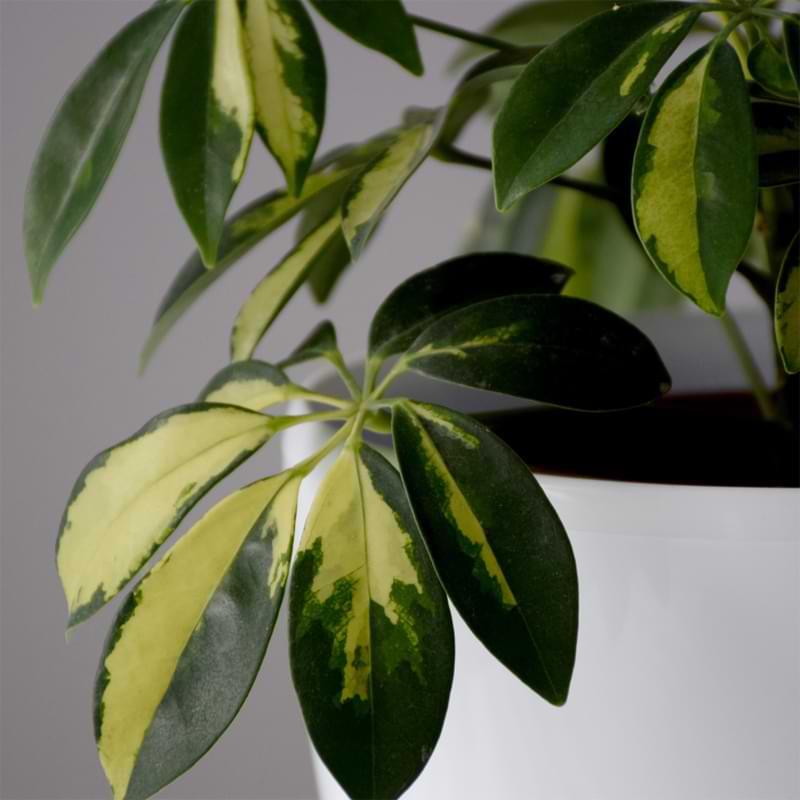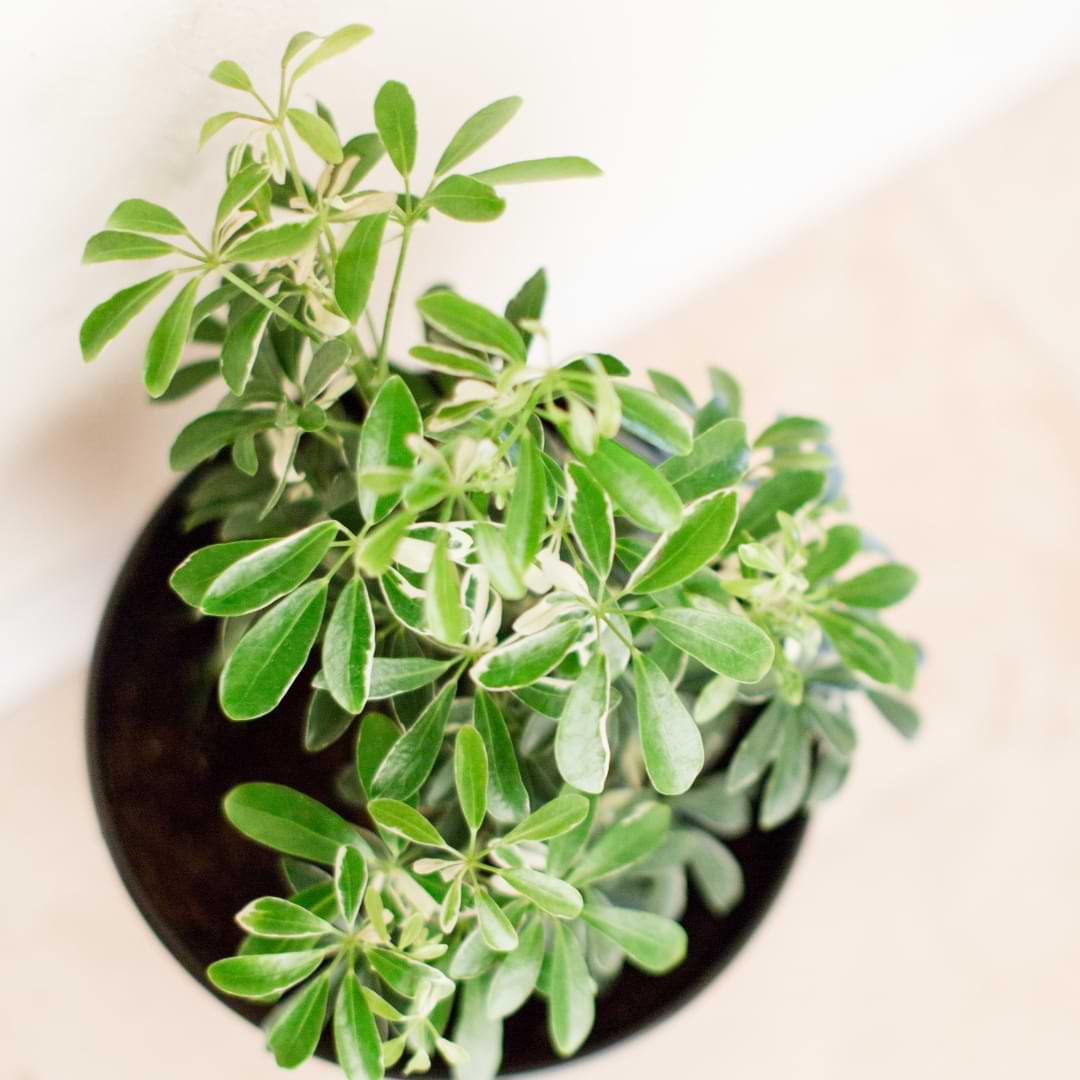Schefflera Care for Beginners
Schefflera is a gorgeous genus of shrubs and trees known for its attractive leaf clusters that mimic the shape of an umbrella. In fact, the most common species kept as houseplants, Schefflera actinophylla and Schefflera arboricola, are referred to as umbrella tree and dwarf umbrella tree, respectively.
Native to South Asia and some parts of Australia, schefflera is a tropical plant, which is part of the secret to its success as an indoor plant! Because so many tropical houseplants evolved to thrive beneath a thick tree canopy, they often tolerate indoor light conditions fairly well.
These plants are also known for being fairly easygoing, so they’re a great plant to try if you’re starting to get the hang of houseplants and are looking to branch out. (Sorry, we couldn’t resist.)
Here’s how to care for a schefflera or umbrella tree of your own.

Table of Contents
How to Care for Schefflera
Soil and Potting
Pot your schefflera in slightly acidic, loamy soil that drains well. Make sure to use a pot with drainage holes!
Plan on repotting every year or two, or when the soil starts to compact and the roots start to get cramped in the pot.
Light
Schefflera plants prefer bright, indirect sunlight. An east-facing window is a great spot for your plant. Placing it near a south- or west-facing window, but not directly in the sun’s rays, will also work. Intense, direct sun will burn the leaves! This makes schefflera care recommended for beginners.
Water
These plants do NOT like to sit in wet soil. Wait until the soil almost completely dries out and then give the soil a good, thorough soaking (much like you’d care for a succulent).
This means you’ll be watering a lot more in the summer when soil dries out quicker and the plant will be using more water as it grows. Make sure to scale back in the winter instead of sticking to a schedule.
We suggest getting a moisture meter and watering when the meter reads a 1 or 2. (Here’s the soil meter we recommend.)
Temperature and Humidity
This plant thrives in temperatures between high 50s and low 70s Fahrenheit (aka room temperature). As a rule, keep it away from drafts, vents, heaters, etc., to avoid freezing or frying the leaves.
As a tropical plant, schefflera appreciates a bit of humidity, so consider setting up a humidifier nearby if your space is dry. A humidity tray will also work for smaller plants.
Fertilizer and Schefflera Care
Fertilize regularly during the spring and summer when the plant is growing. Cut back to half or even stop fertilizing completely in the winter.
We recommend Indoor Plant Food with each watering during the growing season so you won’t have to remember a fertilizing schedule (we can never remember either!).
Pruning
Schefflera can reach up to 10 feet tall indoors, so you may need to prune to control its size.
Conversely, you can also pinch off the ends of the main branches to encourage more branching. Make sure to use clean shears to avoid potentially spreading infection, and wear gloves. Schefflera’s sap can irritate the skin!
Of course, make sure to prune off dead leaves and branches as necessary to keep your plant healthy.
Troubleshooting
Here are the most common schefflera problems and what to do about them!
Leggy or droopy stems: Your plant isn’t getting enough light.
Yellowing, dropping leaves: Your plant is probably overwatered! Let the soil dry out more between waterings.
Brown, crispy leaves: You might be underwatering. Prune off the dead leaves and give your plant a drink!
Insects: Watch out for aphids, mealybugs, and other species of scale. Use this guide to treat insect infestations on your schefflera. You might notice tiny brown dots on the leaves, small holes, sticky clear residue (this is called honeydew), or cottony webbing.
Neem oil is a good all-purpose treatment for insects on houseplants, but make sure to read the instructions and dilute properly or you’ll chemically burn your plant! We also recommend our Leaf Armor for protecting leaves against pests.
Propagation
You can propagate your schefflera with cuttings!
Cut a 4- to 6-inch section of woody stem and remove all but a few leaves at the very top.
Dip the cut end in rooting hormone and plant in a container of potting mix and place in bright, indirect sunlight. Check the soil every day to keep it moist. After about a month, your cutting should have some roots (give a gentle tug to test it) and you might start to see baby leaves!
Continue caring for your baby plant according to the instructions above.
That’s it!
Scheffleras are pretty easygoing and they grow up to be stunning plants. Give one a try if you want a beautiful, statement-making plant for your space!





